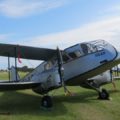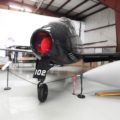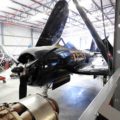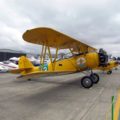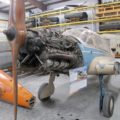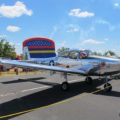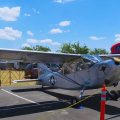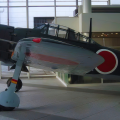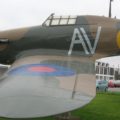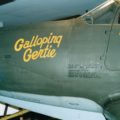
LVG C.VI | |
|---|---|
| Šalies | Vokietija |
| Vaidmenį | Žvalgybiniai orlaiviai |
| Pirmasis skrydis | 1917 |
| Pastatytas | 1100+ |
2007 LVG C.VI buvo Vokietijos dviejų vietų žvalgyba ir artilerijos dėmių orlaiviai, naudojami Pirmojo pasaulinio karo metu.
Šaltinis: LVG C.VI Vikipedijoje
| LVG C.VI Walk Around | |
|---|---|
| Fotografas | Unknow |
| Lokalizavimo | Nežinoti |
| Nuotraukos | 43 |
Taip pat žiūrėkite:
tekstas Nutarė LVG C.VI buvo dviejų vietų žvalgybinis ir artilerijos stebėjimo orlaivis, kurį pirmojo pasaulinio karo metu sukūrė ir pagamino Vokietijos bendrovė "Luft-Verkehrs-Gesellschaft" (LVG). Jis buvo pagrįstas ankstesniu LVG C.V modeliu, tačiau turėjo mažesnį ir lengvesnį dizainą su geresne aerodinamika. LVG C.VI turėjo medinę ir metalinę biplano struktūrą su pusiau monokokiniu fiuzeliažu, padengtu fanera. Jis buvo varomas vienu "Benz Bz.IV" varikliu, kuris vairavo dviejų menčių medinį sraigtą. Lėktuvas turėjo fiksuotą važiuoklę su galiniu slydimu ir vandens radiatoriumi viršutiniame sparne. Įgulą sudarė pilotas ir stebėtojas, kurie turėjo prieigą prie radijo siųstuvo, parašiutų ir šildomų skraidymo kostiumų. LVG C.VI buvo ginkluotas vienu fiksuotu ir vienu kilnojamuoju kulkosvaidžiu ir galėjo nešti iki 90 kg bombų.
LVG C.VI pradėjo tarnybą 1918 m., O Vokietijos "Luftstreitkräfte" daugiausia Vakarų fronte naudojo artimoms žvalgybos ir stebėjimo misijoms. Po karo jį naudojo ir kitos šalys, tokios kaip Lenkija, Suomija, Lietuva, Čekoslovakija, Šveicarija ir Sovietų Sąjunga. Kai kuriuos orlaivius Raab-Katzenstein pavertė keleiviniais lėktuvais kaip LVG P.I, P.II ir RK-8 Marabu. LVG C.VI buvo vienas paskutinių vokiečių dviviečių lėktuvų, masiškai gamintų karo metu, pastatytas apie 1 100 vienetų. Šiandien yra tik trys išlikę LVG C.VI, kurie eksponuojami Anglijos, Belgijos ir Prancūzijos muziejuose.
Views : 1347



